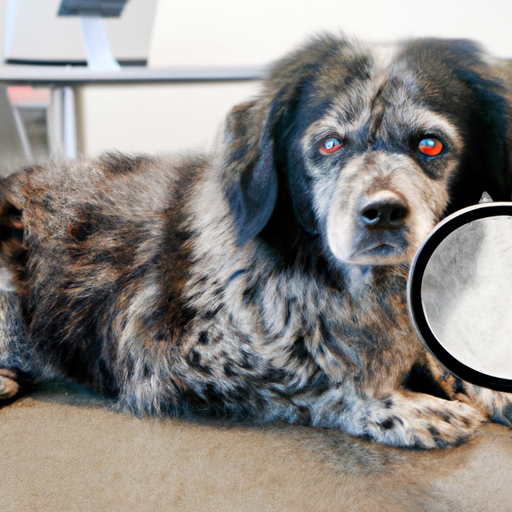As a dog owner, one of the most distressing conditions your canine companion can suffer from is mange. This skin disease, caused by tiny mites, can lead to severe itching, hair loss, and discomfort for your pet. It’s crucial to understand the underlying causes, symptoms, and treatment options for mange to help alleviate your dog’s suffering and prevent future outbreaks.
- Table of Contents
- What is Mange in Dogs?
- Causes of Mange in Dogs
- Symptoms of Mange in Dogs
- Diagnosis and Treatment
- Prevention of Mange in Dogs
-
Frequently Asked Questions
-
Key Takeaways
- Mange is a skin disease in dogs caused by various types of mites.
- The two most common forms of mange are Demodectic mange and Sarcoptic mange.
- Symptoms include excessive itching, redness, hair loss, and sores.
- Treatment involves medicated shampoos, dips, or systemic medications.
- Prevention includes regular grooming, a balanced diet, and avoiding contact with infected animals.
What is Mange in Dogs?
Mange is a skin disease that affects mammals, including dogs, and is caused by parasitic mites. There are several types of mite species, but the two most common ones that cause mange in dogs are Demodex canis and Sarcoptes scabiei. While these mites are generally present on dogs and live without causing any harm, problems arise when their numbers increase uncontrollably.
Mange can be a serious condition, causing a great deal of discomfort and health complications if left untreated. Understanding the causes, recognizing the symptoms, and seeking early diagnosis and treatment can help your furry friend recover faster and prevent severe infestations.
Causes of Mange in Dogs
1. Demodectic Mange
This form of mange, also known as ‘red mange’ or ‘demodicosis,’ is caused by the mite Demodex canis. These mites are typically passed from mother to puppy during the first days of life. Most dogs carry these mites without any issue, but problems occur when the mites multiply excessively, often due to a compromised immune system. Common causes of immune suppression can include stress, malnutrition, or other underlying health issues.
2. Sarcoptic Mange
Also known as ‘canine scabies,’ Sarcoptic mange is caused by the mite Sarcoptes scabiei. These mites burrow into the dog’s skin, causing severe itching and discomfort. Unlike Demodex, Sarcoptes mites are highly contagious and can be easily transmitted through direct contact with an infected animal.
Symptoms of Mange in Dogs
Mange can cause a variety of symptoms in dogs, depending on the type of mite infestation. Common symptoms include:
-
Excessive itching and scratching: This is usually the first sign of mange. Dogs with mange will scratch and bite at their skin incessantly due to the intense itchiness caused by the mites burrowing into their skin.
-
Hair loss and bald patches: Mange often results in loss of fur, resulting in bald patches, particularly around the eyes, mouth, and front legs.
-
Redness, sores, and skin inflammation: The dog’s skin may become red and inflamed due to constant scratching. In severe cases, open sores and bacterial infections can develop.
Diagnosis and Treatment
If you suspect your dog has mange, it’s important to seek veterinary help as soon as possible. The vet will conduct a skin scraping test to identify the type of mite causing the infestation. Treatment options depend on the type of mange and the severity of the condition. They usually involve medicated shampoos, topical ointments, or systemic medications. In severe cases, the vet may recommend special dips or injections.
For more information on this topic, our dog health guide provides comprehensive insights into various health issues affecting dogs and recommended treatment options.
Prevention of Mange in Dogs
Preventing mange primarily involves maintaining your dog’s overall health and hygiene. Regular grooming, a balanced diet, and routine veterinary check-ups can help keep your dog’s immune system strong and ward off potential mite infestations. Additionally, avoiding contact with infected animals and regularly washing your dog’s bedding can minimize the risk of contracting Sarcoptic mange.
For further reading on grooming and hygiene practices, check out these articles: dog grooming tips, healthy dog diet.
Frequently Asked Questions
- Can humans get mange from dogs?
Yes, humans can contract a temporary form of mange from dogs, particularly Sarcoptic mange. However, the mites cannot complete their life cycle in humans, so the condition is self-limiting and often resolves on its own.
- Is mange in dogs curable?
Yes, mange in dogs can be effectively treated with the right medication and care. Early diagnosis is key to a quicker recovery.
- Can mange lead to other health complications?
If left untreated, mange can lead to severe skin infections, immune system issues, and in extreme cases, death. Therefore, it’s crucial to seek veterinary help at the first sign of symptoms.
In conclusion, mange in dogs can be a distressing condition for both you and your pet. However, with understanding, vigilance, and prompt action, it can be effectively managed and treated.



